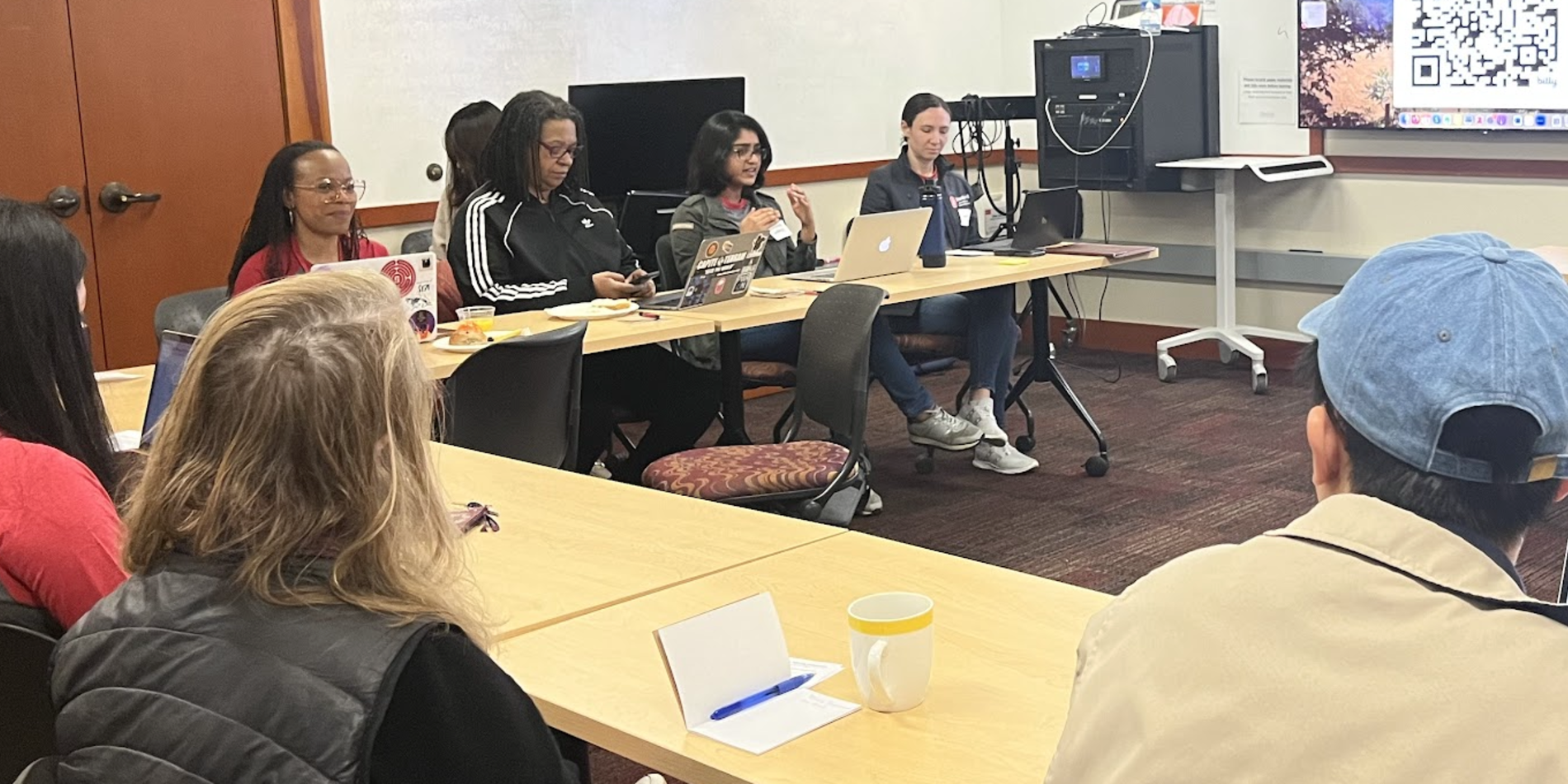From the Bridge: More than a Moment - Reflections on Morrison’s Documentary and Racial Justice
By Zandra L. Jordan
I first saw the documentary Toni Morrison: The Pieces I Am at The Guild in downtown Menlo. It was August 2019, several months before the coronavirus and recurring anti-Black police violence would collide, calling national attention to the deadly consequences of unchecked systemic racism in policing and healthcare. I settled into my seat and observed the room. With just a few people scattered about, it felt like a private showing. That may be preferable if you don’t like crowds or want to secure prime seating, but my fondest movie-going experiences have felt like community events.
When Lean on Me premiered in the 80s, I was one of several hundred Black teenagers to pack out the basement theatre in southwest Atlanta’s Greenbriar Mall. That historic shopping plaza, home to the city’s first Chick-fil-A restaurant (there are more than 40 now), permanently closed the theatre decades ago and its anchor stores this year, but I still remember how good it felt to see the film in a sold-out auditorium in my own neighborhood. We laughed, cried, and cheered in unison, recognizing in the film some semblance of our lives and hopes for the future.
At The Guild, the sense of community that I enjoy in the theatre was not to be, but the documentary, as I expected, impacted me deeply. Having cut my teeth as a teacher with Morrison’s novels, discussing colorism in The Bluest Eye with my composition students at UMICH and chattel slavery in Beloved with my literature students at Andover, I have an enduring affinity for Morrison and her work. Morrison’s bravery in writing the books she wanted to read, books that revolve around Black life rather than the “white gaze,” made me feel that I could be brave too. I could take my predominantly Black K-12 public school and HBCU women’s college education to places where Blacks were historically denied access and use it to bridge racial divides.
That day in the theatre, as I listened to accounts of Morrison’s life and legacy, I was reminded of a courageous teaching moment at Andover. To help my eleventh-grade students understand Beloved, especially those whose family traditions and educational experiences did not include discussion of the brutal realities of slavery, I photocopied artistic renderings of the Middle Passage and posted them on the classroom walls. Students walked around the room, observing the intricate images of slave ships, and then, at my request, laid down on the floor shoulder-to-shoulder. With a recording of ocean sounds playing in the background, students closed their eyes and listened to me read excerpts from the novel. I then asked them to imagine what it felt like to be stolen from your family, shackled to other human cargo, and crammed into the hull of a ship, never to see your homeland again. Years later, I still marvel at their openness and the community of trust that we built. Beloved is quite challenging, even for those with prior knowledge of slavery and of Morrison’s writing style, but I did not receive a single inquiry from the academic dean or complaint from a parent about the curriculum or my teaching. Yet, I knew that it was all very new to many of them. One earnest student even asked during an in-class discussion about a violent scene why slave women did not say “no” to their abusers.
While watching the documentary, I was also riveted by details about Morrison’s writing life. Like me, she preferred writing in the morning. “The only time [she] really wanted to do it and was good at it, [she] thought, was very early in the morning.” So, she rose before the sun, had a cup of coffee as she “watch[ed] the light come,” and then wrote for “three or four hours.” Later in the day, she lacked the same “sensitiv[ity]” and was either “unwilling,” “unable,” or “unenthusiastic” about writing after lunch or in the evening. I feel similarly and during the pandemic have shared Morrison’s writing routine with weary students to encourage them to discover the time of day when they produce their best writing.
Now, roughly two years since I first saw the documentary and the last time I stepped into a movie theatre, I am still thinking about Morrison and the possibilities that her life and legacy inspire. From the documentary I learned that Morrison began making inroads for other Black women writers while working as an editor at Random House and quietly writing The Bluest Eye. She did this revolutionary work at a time when no one else would. As the Black Power Movement emerged and many began to publish, recalls Paula Giddings, the place for Black women and other women of color was quite uncertain. Morrison, aware that the Black Power Movement centered men and the women’s movement focused primarily on white women, created a pathway for Black women writers. Her “profound contribution to American publishing,” says Hilton Als, “has everything to do with the voices she brought into a largely white institution: Gayle Jones, Lucille Clifton…Angela Davis.”
Morrison’s body of work and editorial contributions were how she protested racial injustice. I carry this same spirit with me into the new academic year, a commitment to ongoing racial justice building through my everyday work that extends beyond moments of national outcry. Such a commitment feels vital, as we witness increasingly overt racist rhetoric and violence both nationally and locally. I hope that others will join me in asking, what can I do in my everyday life to promote racial justice?



